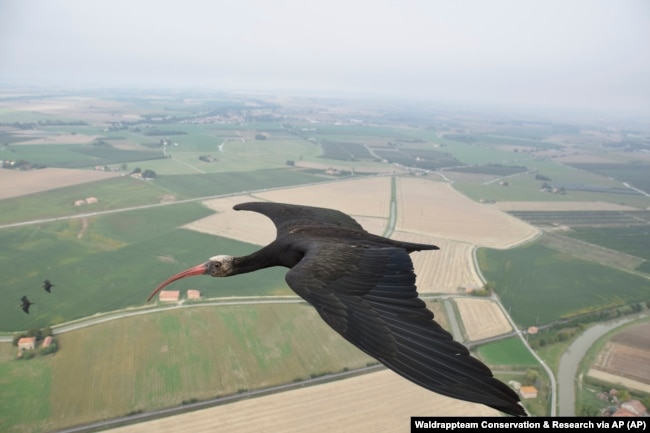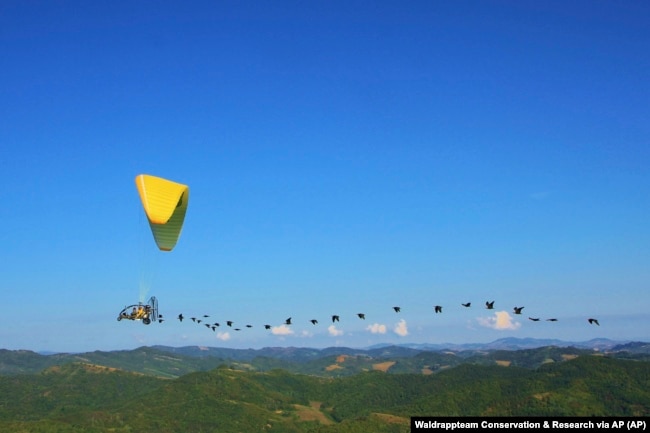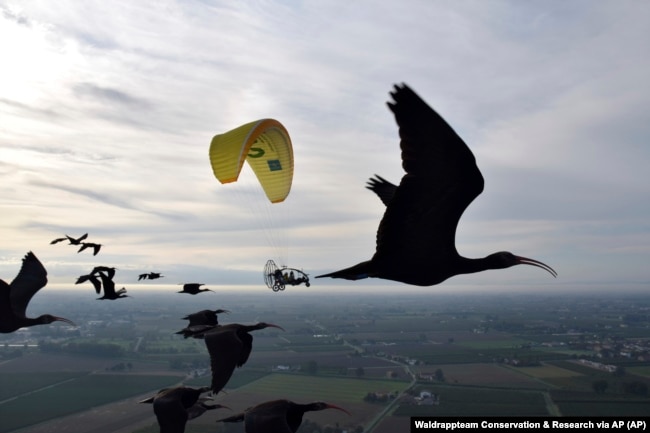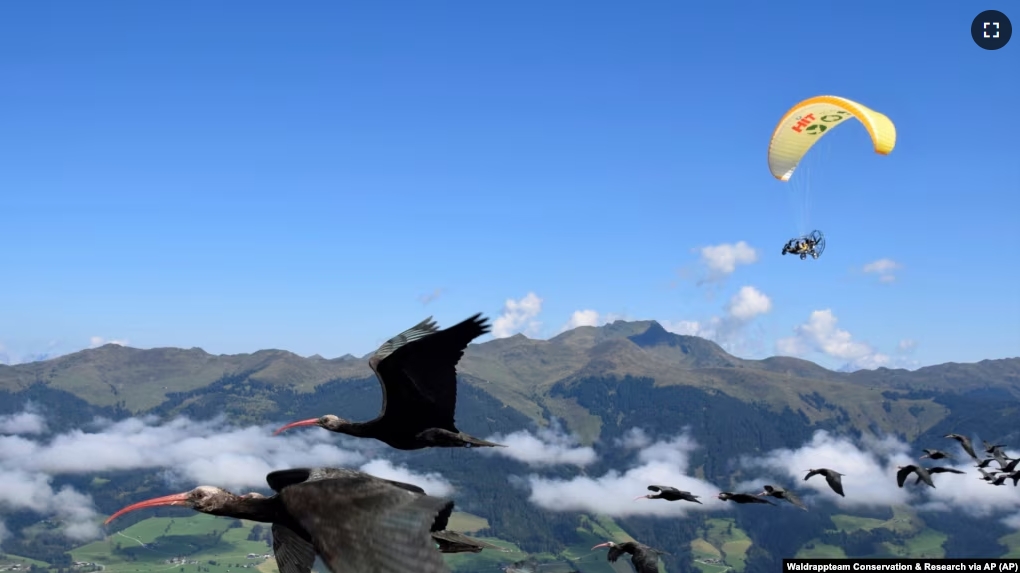Humans hunted and killed almost all northern bald ibis birds by the 17th century. But breeding and rewilding efforts over the last 20 years helped grow the bird population.
However, the birds do not know which direction to fly to migrate without the guidance of wild-born birds. So, humans are helping the birds learn their migration path.
The northern bald ibis once flew over North Africa, the Arabian Peninsula and much of Europe, including southern Germany’s Bavaria. People liked eating the migratory birds, and they disappeared from Europe. A few groups of the birds survived in other places.
In 2002, a conservation and research group based in Austria stepped in to help. The group is called Waldrappteam; the birds are called Waldrapp in German. Scientists at Waldrappteam raise the birds and teach them how to fly to warmer areas.

Johannes Fritz is a biologist working with the team. He said, “We have to teach them the migration route.”
Fritz and the Waldrappteam have increased the number of northern ibis in Central Europe from zero to almost 300 since the start of their project in 2002.
Fritz said the group’s work is the first attempt to reintroduce a continentally extinct migratory bird species. He said his team found that, when released, the birds raised by humans flew in the wrong direction and died in the winter. The humans have led the birds now for 17 years to places like Tuscany, Italy. Due to climate change, they have had to change the route to a winter home. Now they help the birds fly to Andalusia in southern Spain.
To prepare them for travel, the humans begin working with the baby birds, or chicks, when they are just a few days old. The foster parent humans want the birds to connect with them so they will trust them along the migration route.
Barbara Steininger is one Waldrappteam foster mother. She said she acts like “their bird mom.”
“We feed them, we clean them, we clean their nests. We take good care of them and see that they are healthy birds,” she said. “But also we interact with them.”
Steininger and the other foster parents then sit on the back of a very small aircraft, waving and cheering for the birds as they fly.

Fritz knew his work would be possible because he saw the work of Canadian inventor and naturalist Bill Lishman. Lishman taught Canadian geese to fly alongside his small plane beginning in 1988. He later guided endangered whooping cranes through safe routes.
Fritz’s team efforts have worked. The first bird independently migrated back to Bavaria from Tuscany in 2011. The team hopes the Central European population will be more than 350 birds by 2028 and will not need human help to migrate.

This year, the route to Spain is longer than last year’s path. Earlier this month from an airfield in upper Bavaria, the team guided 36 birds along one stage through blue skies and a wind from behind them that increased their speed.
The full journey to Spain could take up to 50 days. Fritz said the effort is bigger than just the northern bald ibises. He hopes the group’s work offers a possibility for helping other threatened migratory species to fly.
I’m Jill Robbins.
Bobby Hardy and Stefanie Dazio reported this story for the Associated Press. Jill Robbins adapted it for Learning English.
______________________________________________
Words in This Story
breeding – n. the activity of keeping and caring for animals or plants in order to produce more animals or plants of a particular kind
migrate – v. of a bird or animal. to move from one area to another at different times of the year
extinct – adj. no longer living
route – n. a way to get from one place to another place
foster – v. to provide the care that a parent usually gives to a child; to be or become the foster parent of a child
interact – v. to talk or do things with others
journey – n. an act of traveling from one place to another
species – n. biology. a group of animals or plants that are similar and can produce young animals or plants
